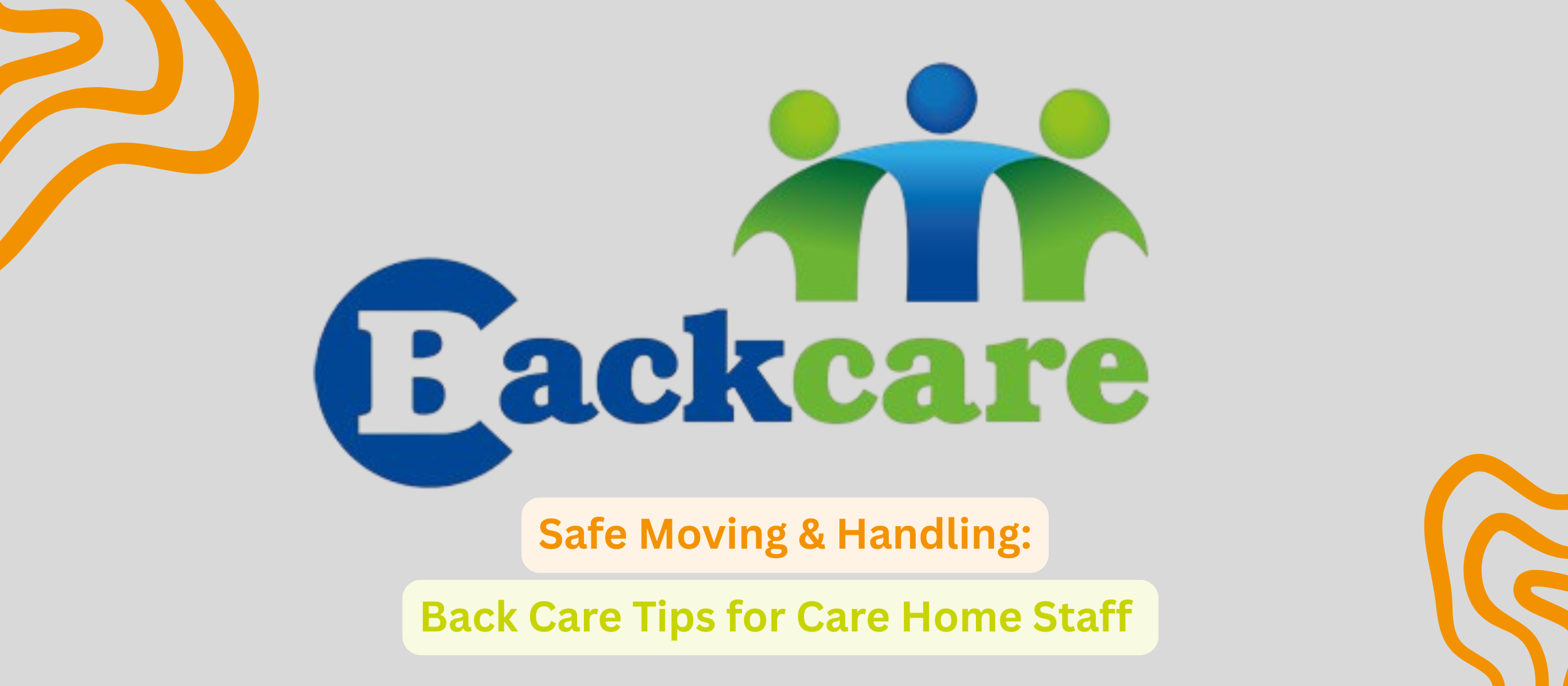Safe Moving & Handling: Back Care Tips for Care Home Staff
- 21 Oct 2025
- News
Keep care staff safe with effective back care methods. Explore ergonomics, manual handling, and training tips for a safer care environment.
Caring for residents in a care home often involves tasks that place stress on the back — like assisting with mobility, transferring residents, repositioning in bed, and handling equipment. Poor posture, repetitive movements, poor or inadequate lifting and assisting techniques can increase the risk of musculoskeletal injuries.
🔹 Why Back Care Matters
• Care workers are at high risk of back injuries, especially lower back strain.
• Injuries can lead to long-term pain, sickness absence, and reduced quality of care.
• Preventing injury protects both the worker and the resident.
🔹 Key Principles of Back Care
1. Posture Awareness
• Keep your back straight and aligned when standing or sitting.
• Avoid slouching or leaning awkwardly for long periods.
• Adjust chairs, trolleys, or beds to a comfortable working height whenever possible.
2. Safe Manual Handling
• Follow the moving & handling policy of your organisation.
• Always assess the risk before moving a person or object.
• Avoid lifting residents manually — use equipment such as hoists, slide sheets, or transfer belts.
• If lifting an object:
o Bend your knees, not your back.
o Keep the load close to your body.
o Avoid twisting — turn with your feet, not your spine.
3. Use of Equipment
• Make use of hoists, standing aids, wheelchairs, and height-adjustable beds.
• Ensure equipment is regularly maintained and you are trained to use it safely.
4. Teamwork
• Ask for help with heavy or difficult tasks.
• Always use two-person techniques where this has been identified as necessary.
• Communicate clearly with colleagues and residents during moves.
5. Building Strength & Flexibility
• Gentle exercises such as stretching, yoga, or Pilates can strengthen core muscles.
• Staying active outside of work helps maintain a healthy back.
6. Workplace Adjustments
• Ensure floors are clear of obstacles.
• Report faulty equipment promptly and take out of service where appropriate.
• Request support if workload or staffing levels make safe practice difficult.
🔹 Practical Tips for Care Workers
• Plan the move before you start.
• Wear comfortable, supportive footwear.
• Take regular short breaks to stretch if standing for long periods.
• Encourage resident independence — let them do as much as possible safely.
🔹 Employer Responsibilities
Care organisations must follow Health and Safety Executive (HSE) guidance and ensure:
• Training in manual handling and use of equipment.
• Adequate equipment is provided and accessible.
• Risk assessments are completed for all moving and handling tasks.
• Staff are supported in reporting injuries or concerns.
✅ Summary:
Back care in care home workers is about prevention, awareness, and safe practice. With correct posture, equipment uses, teamwork, and support from employers, the risk of back injuries can be greatly reduced.
⚠️ Remember: Most back injuries are preventable. Taking good care of your back keeps both you and your residents safe.
Looking to strengthen your wellbeing knowledge? Explore our blog on Go Sober for October: UK Benefits & Challenge
For further guidance on back health and posture, visit the Backcare Charity




